Today we finished the patch of birch, so now we've felled everything we think that needs to be done before the oaks are thinned. There's still more to do, but the pressure is off now. Here's the patch of birch, at the start of yesterday and end of today: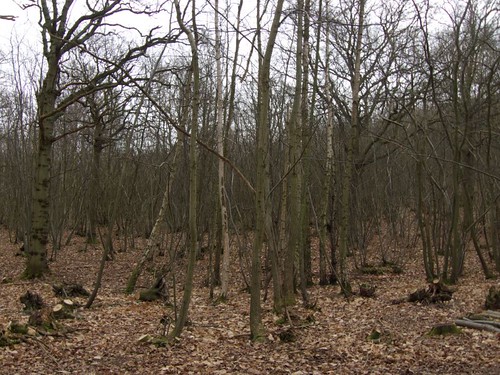
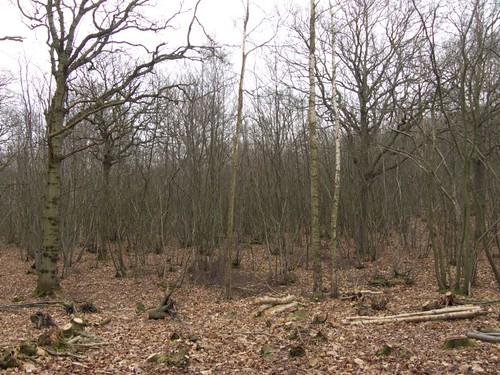 They're all neatly stacked in a few piles of 10-foot logs now:
They're all neatly stacked in a few piles of 10-foot logs now: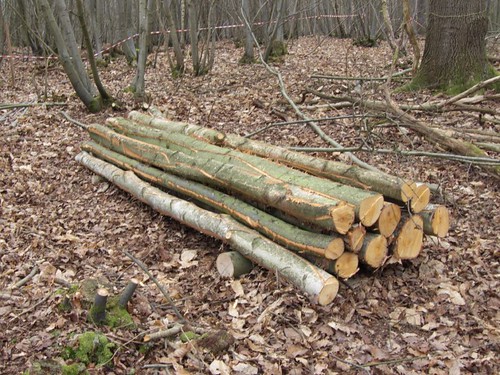 And another felling video, this time of a bendy tree, so you'll see me get out of the way promptly as it falls, though in the end it didn't do anything unexpected:
And another felling video, this time of a bendy tree, so you'll see me get out of the way promptly as it falls, though in the end it didn't do anything unexpected:
Here's some general views of how the area is looking now. There's quite a few, so just scroll down if you get bored - after them is some evidence of recent boar activity!

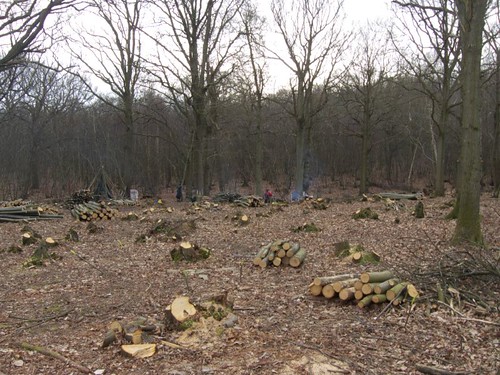

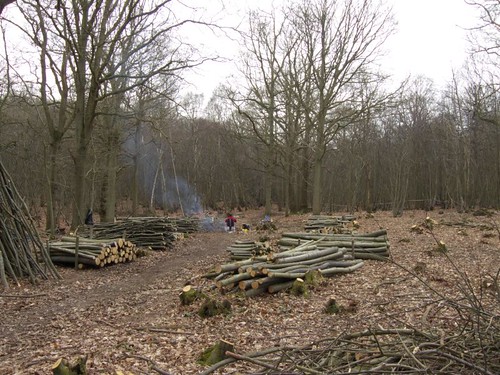
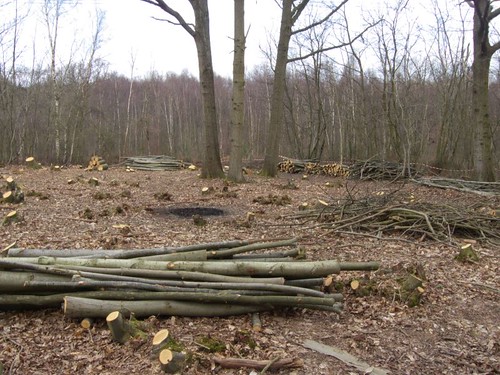

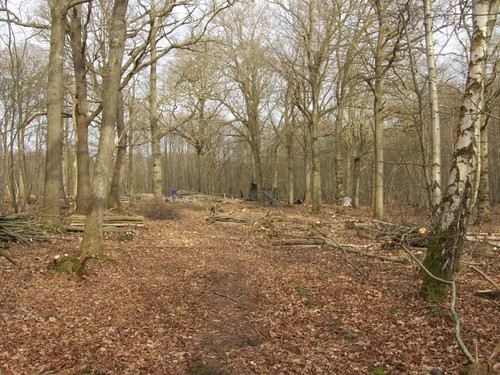 With the birch out of the way, we decided to take a walk to look at what Spring is bringing. The first thing we found was new holes dug by boar, just below the second of our two ponds:
With the birch out of the way, we decided to take a walk to look at what Spring is bringing. The first thing we found was new holes dug by boar, just below the second of our two ponds: and as we wandered across in the direction of Dome Wood we saw some droppings:
and as we wandered across in the direction of Dome Wood we saw some droppings: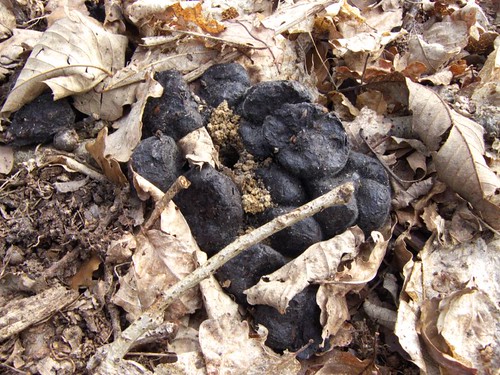 Compare these to the pictures on http://www.britishwildboar.org.uk/field.htm. The picture they have looks to be of fresh droppings, as they are shiny, while the ones we found were obviously some days old. They could be boar droppings, but I'm not sure. They could also be deer - any comments welcome!
Compare these to the pictures on http://www.britishwildboar.org.uk/field.htm. The picture they have looks to be of fresh droppings, as they are shiny, while the ones we found were obviously some days old. They could be boar droppings, but I'm not sure. They could also be deer - any comments welcome!
A few steps further and we were approaching the boundary with Dome Wood, and saw something interesting in Colin's patch, and went to take a closer look: More boar activity! In this case, they also seem to have marked the oak, see a close up below:
More boar activity! In this case, they also seem to have marked the oak, see a close up below: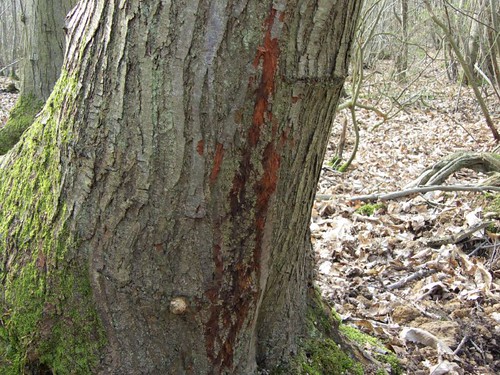 This could be territorial mark, according to http://www.britishwildboar.org.uk/field.htm
This could be territorial mark, according to http://www.britishwildboar.org.uk/field.htm
I'm sure Colin must have seen this, but if not, sorry for beating you to it on posting the photos! :-)
We saw some other wildlife too, including a Red Admiral and a Tortoiseshell butterfly, which was exciting, as they were in the clearing we've created by our coppicing, and we've rarely seen butterflies in the wood before, never mind two in one day. We also saw a bumble bee, which I eventually got a photo of, after 5 minutes of chasing it until it stayed still long enough: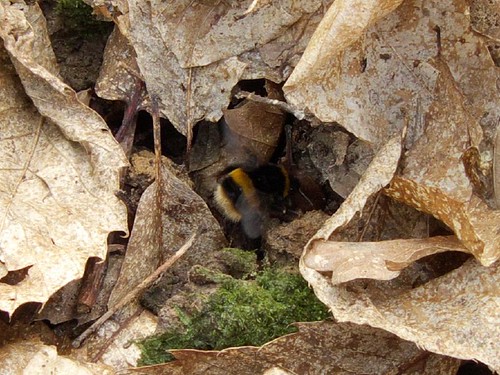 Over in Sweep Wood, areas that were once brown are now carpeted with green:
Over in Sweep Wood, areas that were once brown are now carpeted with green:
a few weeks ago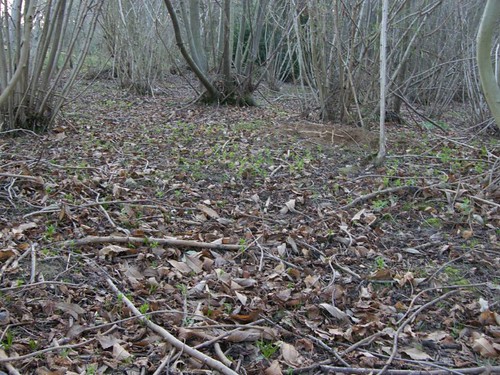 now
now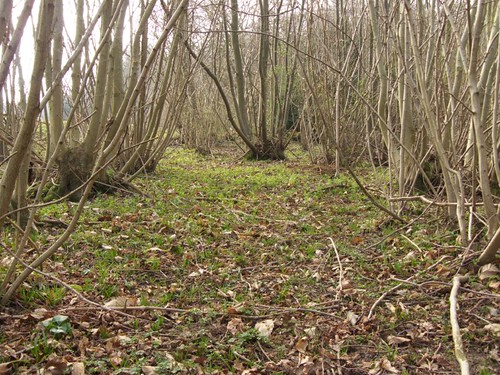 Getting down to ground level, there are wood anemones just coming into flower:
Getting down to ground level, there are wood anemones just coming into flower: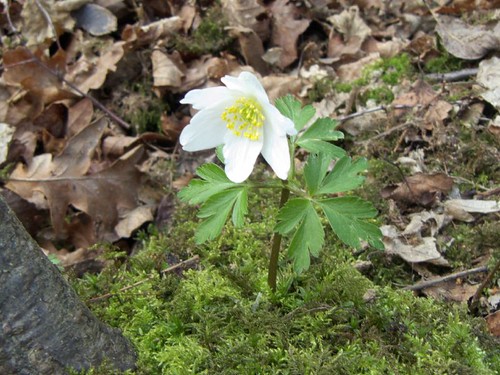 And also the Lesser Celandine, which I had to look up:
And also the Lesser Celandine, which I had to look up: According to Wikipedia, it was also known as Pilewort,
According to Wikipedia, it was also known as Pilewort,
"The plant used to be known as Pilewort, as it was used to treat haemorrhoids. Supposedly the knobbly tubers of the plant resemble piles, and according to the Doctrine of signatures this resemblance suggests that pilewort could be used to cure piles."Anyway, the important thing about both of these two plants, along with the bluebells (which are yet to flower...), as that they are all ancient woodland species, according to this list from the Woodland Trust.
Mike

1 comment:
Those are beautiful spring flowers. I'm looking forward to seeing what blooms in an old English wood.
Post a Comment